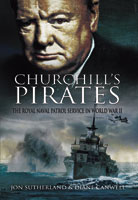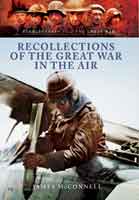Battle of Britain 1917 (ePub)
Imprint: Pen & Sword Aviation
File Size: 3.8 MB (.epub)
Pages: 224
ISBN: 9781783460359
Published: 16th March 2005
| Other formats available - Buy the Hardback and get the eBook for free! | Price |
|---|---|
| Battle of Britain 1917 Hardback Add to Basket | £19.99 |
In the autumn of 1916 the Germans began to equip with the Gotha twin-engined bomber. Of a pusher layout, these aircraft could fly at 15,000 feet, well above any contemporary fighter's maximum height. With a range of 800 km (500 miles) and a bomb load of up to 500 kg (1,100 lb), the Gothas were designed to carry out attacks across the channel against Britain. A group of four squadrons was established in Belgium, and they carried out their first bombing raid towards the end of May 1917. This 22 aircraft sortie, against the town of Folkestone, caused 95 deaths. In mid June a force of 18 Gothas attacked London in broad daylight. Over 90 British fighters met them, but not one Gotha was brought down. This bombing raid caused 162 deaths.
From mid-September an even larger, more potent bomber joined the Gothas. The Zeppelin-Staaken Riesenflugzeug or "Giant" bomber was a four-engined tractor biplane with an enclosed cabin that may have been inspired by the Russian Murometz. The Giant certainly deserved its title with a wingspan of 42 metres (138 feet) it was only one metre (3 feet) shorter than Boeing's famous B29 Superfortress of World War II fame, and its tailplane was roughly the same size as a Sopwith Pup. It could carry a maximum bomb load of 2,000 kg (4,400lb) but for long-range flights, such as against London, this was reduced to half that figure. It had a range of about 800km (500 miles). Like the Murometz, the engines could be serviced in mid-flight.
The Gotha/Giant night raids continued throughout 1917, almost unscathed until December when the British began to have success in intercepting the Gothas at night. Anti-aircraft fire was also becoming more effective and the increased use of barrage balloons affected the bombers. By the end of the war a 50-mile long line of barrage balloons surrounded London. In the meantime the Giants continued a small but influential campaign against London.
On 16 February, during a four aircraft raid, a Giant dropped a 1,000 kg (2,200 lb) bomb - the largest used by anyone in the war - and blew up a wing of the Chelsea hospital. During the same raid another Giant survived colliding with the cable of a barrage balloon and fell 1,000 feet before the pilot could regain control. The following evening a single Giant returned and scored a direct hit on St. Pancras railway station.
This book offers something you hardly ever find: the assignment of a monetary value to destruction.
Speed Readers.info
Extensive specs for all Gotha and Giant bombers are given. Five Appendices break down casualty numbers, raid statistics, Staaken aircraft service history, RNAS/RFC squadron action dates, RFC personnel lists. A Bibliography and a good Index round out matters.
About Diane Canwell
Jonathan Sutherland and Diane Canwell have written widely on historical subjects, in particular on military and aviation history, and they have long been fascinated by the history of Norfolk and its military heritage. Among their many books are The RAF Air Sea Rescue Service 1918-1986, The Battle of Jutland and Air War Malta.
About Jonathan Sutherland
Jonathan Sutherland and Diane Canwell have written widely on historical subjects, in particular on military and aviation history, and they have long been fascinated by the history of Norfolk and its military heritage. Among their many books are The RAF Air Sea Rescue Service 1918-1986, The Battle of Jutland and Air War Malta.
German WWI Bomber bombs St Pancras
17th February 1918
As fighter aircraft improved in WWI, the great gas-filled Zeppelins prove too vulnerable to undertake bombing raids. In their place both sides developed heavy bombers during the second half of the war, and by 1918 these were quite formidable craft. On February 17 of that year one of London's railway stations, St Pancras, was bombed by a Staaken R.VI (with a wingspan nearly equaling that of the WWII Boeing B-29) carrying a crew of seven and a bomb load of 4000 pounds. Read more: http://www.historyworld.net/wrldhis/PlainTextHistories.asp?ParagraphID=qby#ixzz1ED4UvOcz



























